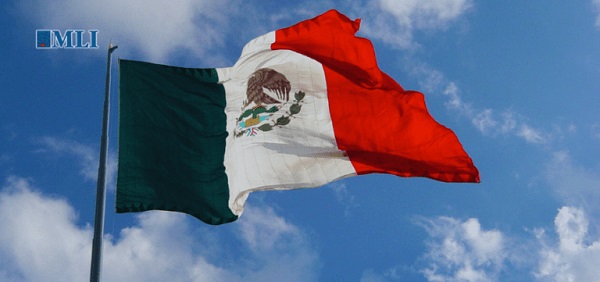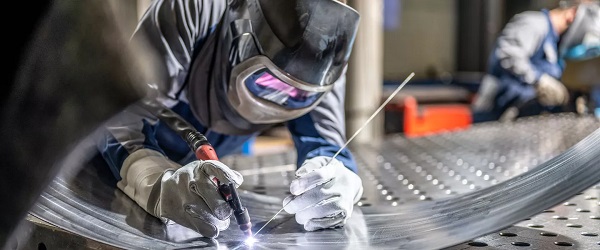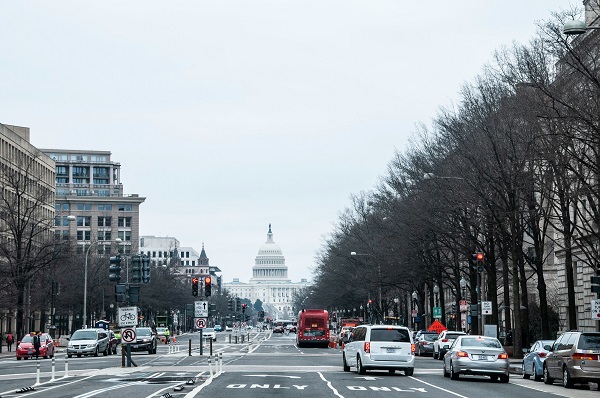Crime
Mexican cartels are a direct threat to Canada’s public safety, and the future of North American trade

From the Macdonald Laurier Institute
By Gary J. Hale for Inside Policy
RCMP raided a fentanyl ‘superlab’ in Falkland, BC, with ties to a transnational criminal network that spans from Mexico to China.
On October 31, residents of Falkland, BC, were readying their children for a night of Halloween fun. Little did they know that their “quaint, quiet, and low-key little village” was about to make national headlines for all the wrong reasons.
On that day, RCMP announced that it had raided a fentanyl “superlab” of scary proportions near Falkland – one that police called the “largest and most sophisticated” drug operation in Canada. Officers seized nearly half-a-billion-dollars’ worth of illicit materials, including 54 kilograms of finished fentanyl, 390 kilograms of methamphetamine, 35 kilograms of cocaine, 15 kilograms of MDMA, and six kilograms of cannabis” as well as AR-15-style guns, silencers, small explosive devices, body armour, and vast amounts of ammunition.
They also found massive quantities of “precursor chemicals” used to make the drugs. This strongly suggests that the superlab was tied into a transnational criminal network that spans from Mexico to China – one that uses North America’s transportation supply chains to spread its poisonous cargo across Canada and the United States.
The Canada-US-Mexico relationship is comprised of many interests, but the economic benefits of trade between the nations is one of the driving forces that keep these neighbours profitably engaged. The CUSMA trade agreement is the successor to NAFTA and is the strongest example globally of a successful economic co-operation treaty. It benefits all three signatories. This level of interdependence under CUSMA requires all parties to recognize their respective vulnerabilities and attempt to mitigate any threats, risks, or dangers to trade and to the overall relationship. What happens to one affects all the others.
The supply chain, and the transport infrastructure that supports it, affects the balance books of all three. While the supply chain is robust and currently experiences only occasional delays, the different types of transport that make up the supply chain – such as trucks, trains, and sea-going vessels – are extremely vulnerable to disruption or stoppages because of the unchecked violence and crime attributed to the activities of Mexican Transnational Criminal Organizations (TCOs). These cartels operate throughout Mexico, from the Pacific ports to the northern plains at the US-Mexico border.
The sophistication of the Falkland superlab strongly suggests connectivity to multi-national production, transportation, and distribution networks that likely include China (supply of raw products) and Mexico (clandestine laboratory expertise).
For most Canadians, Mexican cartels call to mind the stereotypical villains of TV and movie police dramas. But their power and influence is very real – as is the threat they pose to all three CUSMA nations.
Mexico’s cartels: a deadly and growing threat
Mexican cartels started as drug trafficking organizations (DTOs) in the 1960s. By the late 1990s they had evolved to become transnational enterprises as they expanded their business beyond locally produced drugs (originally marijuana and heroin) to include primarily Colombian cocaine that they transported through Mexico en route to the US and Canada.
Marijuana and the opium poppy are cultivated in Mexico and, in the case of weed, taken to market in raw form. While the cartels required some chemicals sourced from outside Mexico to extract opium from the poppy and convert it into heroin, the large-scale, multi-ton production of synthetic drugs like Methamphetamine and today Fentanyl expanded the demand for sources of precursor chemicals (where the chemical is slightly altered at the molecular level to become the drug) and essential chemicals (chemicals used to extract, process, or clean the drugs.)
The need to acquire cocaine and chemicals internationalized the cartels. Mexican TCO’s now operate on every continent. That presence involves all the critical stages of the criminal business cycle: production, transportation, distribution, and re-capitalization. Some of the money from drug proceeds flow south from Canada and the US back to Mexico to be retained as profits, while other funds are used to keep the enterprise well-funded and operational.
In Mexico, the scope of their activities is economy-wide; they now operate many lines of criminal business. Some directly affect Mexico’s economic security, such as petroleum theft, intellectual property theft (mainly pirated DVDs and CDs), adulterating drinking alcohol, and exploiting public utilities. Others are in “traditional” criminal markets, such as prostitution, extortion, kidnapping, weapons smuggling, migrant smuggling and human trafficking. Organized auto theft has also become another revenue stream.
Criminal Actors
The Cartel de Sinaloa (CDS or Sinaloa Cartel) and the Cartel Jalisco Nueva Generacion (CJNG) are the two principal TCO’s vying for territorial control of Mexico’s air, land, and maritime ports, as well as illegal crossing points. These points on the cartel map are known as “plazas,” and are often between formal ports of entry into the US. By controlling territories crucial for the inbound and outbound movement of drugs, precursors, people, and illegal proceeds, the cartels secretly transport illicit goods and people through commercial supply chains, thus subjecting the transportation segment of legitimate North American trade to the most risk.
That is giving the cartels the power to impair – and even control – the movement of Mexico’s legitimate trade. While largely kept out of the public domain, incidents of forced payment of criminal taxation fees, called “cuotas,” and other similar threats to international business operations are already occurring. For instance, cuotas are being imposed on the transnational business of exporting used cars from the US to Mexico. They’re also being forced on Mexican avocado and lime exporters before the cartels will allow their products to cross the border to the US and international markets. This has crippled that particular trade. Unfortunately, the Mexican government has been slow to react, and the extortion persists throughout Mexico. It is worth repeating – these entirely legitimate goods reach the market only after cartel conditions are met and bribes paid.
The free trade and soft border policies of the US of recent years have allowed cartel operatives to enter that country and work the drug trade with limited consequence. In May, the U.S. Drug Enforcement Administration (DEA) published the National Drug Threat Assessment 2024, where it reported that the Jalisco and Sinaloa cartels operate in all 50 US states and are engaged in armed violence in American cities as they fight for market shares of the sales of Methamphetamine, Fentanyl, and other drugs sourced from Mexico.
The DEA’s findings should sound alarms in Canada. Canada and the US have similar trade and immigration policies, which allow the Mexican cartels to easily enter and control the wholesale component of the drug trade. The long-term effects of the drug trade are the billions of dollars gained that allow for the corruption of government officials. Canada should be on guard: Mexican drug cartels in Canada could begin to not only kill ordinary Canadians by knowingly selling them deadly drugs like Fentanyl – their operatives can also embed themselves in Canadian society, as they have in the US, leading to ordinary citizens on Canadian streets being victimized by the armed violence cartels regularly use to assert their position and power.
Organized crime and Mexican governance
Canada faces these threats directly, but the indirect ones that the cartels present to Mexican governance are no less consequential to Canada in the long term – and likely sooner. Illicit agreements between corrupt Mexican government officials and the cartels assure that the crime organizations retain control of territory and have freedom to operate.
That threat is becoming increasingly existential. Cartel fighters are well disciplined, well equipped and strong enough to challenge Mexico’s military, currently the government’s main tool to fight them. Should the TCOs come to dominate Mexican society or gain decisive influence over government policy, Mexico’s government risks being declared a narco-democracy and the US may come to see the cartels as a threat to national security. That in turn could lead to a US military intervention in Mexico – not an outcome desired by either side.
While that scenario may be considered extreme, it is not as far from reality as many may think. While in many respects the US-Mexico trading relationship remains unchanged, the overall political context has become testy – and could be a real flashpoint for the incoming Trump administration.
Political developments in Mexico have played a role. After his election in 2018, former Mexican President Andrés Manuel López Obrador (commonly referred to his initials, AMLO) demonstrated a disdain for all things North American. This included frequent complaints of US interference or violation of Mexican sovereignty – complaints that were more about keeping Mexican government domestic actions out of the public eye. To retain a shroud of secrecy over government corruption, Mexico under Amlo started in 2022 to limit the activities and numbers of US federal law enforcement agencies operating there, particularly the FBI, DEA, ATF and ICE. These agencies formerly enjoyed a close relationship with the Mexican Federal Police – a force AMLO disbanded and replaced with the National Guard. The AMLO administration reduced the number of US assets and agents in Mexico, particularly singling out the DEA for the most punitive restrictions.
During his administration, AMLO placed the army and navy in charge of all ports of entry and gave them responsibility for all domestic public safety and security by subordinating the Guardia Nacional (GN), or National Guard, to the army. The GN, the only federal law enforcement agency, has been taken over by military officials who are sometimes corrupt and in league with the cartels.
Mexican President Claudia Sheinbaum, who took office in 2024, has continued AMLO’s organizational moves. Sheinbaum comes from the same political party and has so far extended carte blanche to the military, whose administration is opaque and now operates with impunity, under the guise of “national security” and “sovereignty” concerns.
It is expected that Sheinbaum will continue to shield American eyes from Mexico law enforcement and judicial affairs. The fear in the US law enforcement and national security community is that Sheinbaum may even declare DEA non grata, much as then Venezuelan President Hugo Chavez in 2005 and Bolivian President Evo Morales in 2008 did in their countries. Both were anti-American leftists of the same mindset as AMLO and Sheinbaum, who feared detection of their connections to the illegal drug trade.
Sheinbaum has publicly demonstrated disinterest in the consistent application of the rule of law against the TCOs by stating that she will continue the “hugs not bullets” (“abrazos, no balazos”) non-confrontational, non-interventional posture towards organized crime. Agreements with corrupt government officials will allow the cartels to expand their business and to operate with impunity. Through intimidation, bribery, and murder, the cartels affect decision making at the municipal, state, and federal levels of Mexican government. That leverage, while performed outside the public eye, has the potential to negatively affect supply and demand among the three countries at the very least, and at worst, to signal that cartels in Mexico are directly or indirectly involved in the formulation of government security, immigration, drug, and trade policy.
AMLO enacted constitutional changes that will provide Sheinbaum with the powers of a dictator, giving her administration unchecked control of the executive, legislative, and judicial branches of government. As a result, the judiciary in Mexico is in crisis mode with 8 of 11 Supreme Court Justices resigning in October 2024 to protest the unconstitutional disregard for due process that started with AMLO and continues with Sheinbaum thanks to a “voting for judges” law that she and AMLO have rammed into operation without debate. This development portends even more corruption.
Without the existence of an independent judicial system, these institutional changes could give pause to US and Canadian negotiators when it comes time to renew CUSMA in 2026.
Beyond 2025: Mexican organized crime as a threat to the US and Canada, and Greater North American implications
Most worrying, the cartels will be in a yet stronger position to affect and even dictate the pace and volume of legitimate trade between the US and Mexico under Sheinbaum. This makes Mexico the weakest link among the three CUSMA members.
The US and Canada should therefore be concerned about the strength and power of the cartels because the current trajectory could provide them a greater role in Mexico’s performance as a trade partner. Should this trend continue, the US would likely begin to see Mexico through the lens of a threat to critical components of its national security: 1) the public safety of US citizens being killed in epidemic proportions by the drugs produced by citizens of Mexico; 2) the negative impact or increased cost of commerce that supplies goods to the American market; and 3) the CUSMA relationship that sustains the economic strength of all three participating countries.
This worrisome evolution requires proactivity by Canada and the US to insist that Sheinbaum reverse the gains that the cartels have made to influence policy and erode the government’s monopoly on territorial control and the use of violence, and reverse Mexico’s limits on drug enforcement co-operation with what should be its partners to the north. Pressure should also be applied to demand a return to a drug policy model that includes international law enforcement co-operation and a continuation towards the transformation of the Mexican judicial system from a mixed inquisitorial or accusatorial system to an adversarial system that employs the use of juries, witness testimony, oral hearings and trials, and cross-examination of witnesses, as opposed to a system where cartel-influenced elections could dictate judicial outcomes.
The implications of the further development of a Mexico narco-democracy for US-Mexico-Canada relations would be devastating. Co-operation on public safety and security would cease completely, allowing the cartels to take full control of commercial supply lines, significantly reducing trade between the three nations – likely causing the CUSMA trade deal to fracture until governance returned to duly elected civilian officials.
Continental security and Canada’s contribution
The continued success of CUSMA lies with Mexico more than any other country. Should Mexico continue on its path to autocracy, it could upset the trade deal, crucial to the prosperity of all three countries. Canada is not immune from what on the surface may appear to be mostly bilateral, US-Mexico issues, because, regardless of the commodity – whether it’s consumables or manufactured items – the cartels are positioned and empowered to affect imports, exports, trade, and migration throughout North America.
For the foreseeable future, Mexico is not going to voluntarily change its security posture. This enables the cartels to remain persistent threats, especially to trade. Canada and the US need to continue to jointly insist that Mexico take a stronger stance against organized crime and that it take steps to strengthen the judiciary and the rule of law in that country.
Gary J. Hale served 31 years in the Drug Enforcement Administration (DEA), retiring as an executive-level intelligence analyst. In 2010, he was appointed as Drug Policy fellow and Mexico Studies Scholar at the James A. Baker III Institute for Public Policy at Rice University in Houston, Texas.
2025 Federal Election
China Election Interference – Parties Received Security Briefing Days Ago as SITE Monitors Threats to Conservative Candidate Joe Tay

 Sam Cooper
Sam Cooper
SITE says it is concerned about the Hong Kong bounty on Joe Tay and is monitoring the situation, but confirms intervention in the Chiang case is not within its powers
Canada’s election threat monitoring body has confirmed that national party leaders received a classified security briefing late last week, as public concerns mount over threats tied to transnational repression and a widening controversy involving Liberal MP Paul Chiang’s remarks about Conservative candidate Joe Tay.
The revelation came Monday during a public update by the Security and Intelligence Threats to Elections (SITE) Task Force. Allen Sutherland, a senior Privy Council Office official and SITE leader, confirmed the briefing referenced today by Prime Minister Mark Carney covered high-level threat assessments and involved security-cleared representatives from each political party. While SITE would not confirm whether Chiang’s remarks were specifically addressed, the timing suggests they may have been a factor.
“I can speak to a portion of it,” Sutherland said in response to a question from The Canadian Press. “Last week, political parties received a briefing — a security briefing — on threats at the classified level. These are the cleared party representatives of each of the parties. So that briefing took place late last week.”
A CBC reporter also pressed SITE officials on whether they were concerned by Chiang’s comment suggesting Tay could be delivered to the Chinese Consulate to collect a bounty. “I would say SITE is concerned about the bounty placed by Hong Kong on Mr. Tay,” said Laurie Ann Kempton of SITE. “We are aware of the comments.”
Asked what candidates should do if they face similar threats, Kempton said: “They should contact police of local jurisdiction immediately. They are also able to contact SITE and the RCMP if they have other concerns, and we will look at it from there.”
Joe Tay has stated publicly that he fears for his safety and has contacted the RCMP. Asked if police have reached out to Tay proactively, SITE official Greg O’Hayon said: “I’d have to get back to you specifically on whether the RCMP has reached out to Mr. Tay.” He added: “If candidates feel under threat, either immediate or not, I would encourage them to reach out to their local police as well as the Canadian Security Intelligence Service so that we can have a combined response to real and perceived threats.”
SITE officials confirmed that the bounty placed on Tay — a Canadian citizen and pro-democracy activist wanted by Hong Kong authorities under Beijing’s National Security Law — is being tracked as a live case of transnational repression. Officials described the recirculation of bounty-related content online as a coercive tactic employed by Beijing to chill political participation in diaspora communities.
“Spreading the information about the bounty is precisely how malign foreign states seek to silence, harass and coerce,” one SITE official said.
Tay’s situation has quickly become a flashpoint in the 2025 federal election campaign. The Chiang controversy erupted after reports surfaced late last week, based on Ming Pao reporting, indicating that during a January meeting with Chinese-language journalists, Chiang said of Tay: “If you can take him to the Chinese Consulate General in Toronto, you can get the million-dollar reward.”
Chiang also told the exclusive gathering of Chinese journalists that Tay’s election to Parliament, while under a Beijing-issued arrest warrant, would cause a “great controversy.”
Chiang has since said his comment was made in jest and issued a social media apology. But Tay rejected the gesture in a press release Monday, calling it “unsolicited” and demanding that Liberal leader Mark Carney remove Chiang as a candidate.
“Threats like these are the tradecraft of the Chinese Communist Party,” Tay said. “They are intended to send a chilling signal to the entire community in order to force compliance to Beijing’s political goals. This situation has left me fearing for my safety.”
SITE also issued a broader warning on Monday: Canada is seeing a rise in both physical and digital transnational repression, including online harassment, smear campaigns, AI-generated deepfakes, and attempts to dox critics of authoritarian regimes.
“In 2023, we informed the public about a targeted online information operation… aimed at silencing critics of the Chinese Communist Party,” said the SITE representative from Global Affairs Canada. “Now, we’ve seen new operations using deepfake content, including sexually explicit images, to further that goal.”
Come back to The Bureau for updates on this rapidly evolving story.
The Bureau is a reader-supported publication.
To receive new posts and support my work, consider becoming a free or paid subscriber.
Support a public interest startup.
We break international stories and this requires elite expertise, time and legal costs.
2025 Federal Election
Joe Tay Says He Contacted RCMP for Protection, Demands Carney Fire MP Over “Bounty” Remark

 Sam Cooper
Sam Cooper
‘Threats are the tradecraft of the Chinese Communist Party to interfere in Canada … they are intended to send a chilling signal to the entire community‘ Tay states
Joe Tay, the Conservative candidate in Don Valley North, issued a formal statement Monday demanding that Liberal leader Mark Carney remove MP Paul Chiang as the candidate for Markham–Unionville, citing Chiang’s threatening comments and an unsolicited attempt to contact him.
“Mark Carney must fire Paul Chiang,” Tay said in the release. “His threatening public comments were intended to intimidate me, and they must not be tolerated.”
Tay also revealed he has already engaged the Royal Canadian Mounted Police for personal protection, citing growing safety concerns — even before Chiang’s remarks became public.
“This situation has left me fearing for my safety,” he said.
Tay, a Hong Kong-Canadian democracy activist, is wanted by authorities in Hong Kong under the territory’s sweeping National Security Law. In January, Chiang told Chinese-language media that Tay could be brought to the Chinese Consulate in Toronto to collect a one-million-dollar bounty. The remarks, first reported by Ming Pao and widely condemned across party lines, are under growing scrutiny amid allegations of foreign interference in Canada’s 2025 federal election.
Tay confirmed Monday that Chiang made an unsolicited attempt to contact him over the weekend and then posted publicly that he had issued an apology.
“I want to be clear: no apology is sufficient,” Tay said. “Threats like these are the tradecraft of the Chinese Communist Party to interfere in Canada. And they are not just aimed at me — they are intended to send a chilling signal to the entire community in order to force compliance to Beijing’s political goals.”
The Bureau has contacted the RCMP for comment.This is a developing story.
The Bureau is a reader-supported publication.
To receive new posts and support my work, consider becoming a free or paid subscriber.
Support a public interest startup.
We break international stories and this requires elite expertise, time and legal costs.
-

 Uncategorized24 hours ago
Uncategorized24 hours agoPoilievre on 2025 Election Interference – Carney sill hasn’t fired Liberal MP in Chinese election interference scandal
-

 Business1 day ago
Business1 day agoCuba has lost 24% of it’s population to emigration in the last 4 years
-

 2025 Federal Election1 day ago
2025 Federal Election1 day ago2025 Election Interference – CCP Bounty on Conservative Candidate – Carney Says Nothing
-

 2025 Federal Election11 hours ago
2025 Federal Election11 hours agoChinese Election Interference – NDP reaction to bounty on Conservative candidate
-

 Business2 days ago
Business2 days agoTariff-driven increase of U.S. manufacturing investment would face dearth of workers
-

 Aristotle Foundation1 day ago
Aristotle Foundation1 day agoCanada has the world’s MOST relaxed gender policy for minors
-

 2025 Federal Election1 day ago
2025 Federal Election1 day ago2025 Federal Election Interference from China! Carney Pressed to Remove Liberal MP Over CCP Bounty Remark
-

 International1 day ago
International1 day agoTrump signs executive order to make Washington D.C. “safe and beautiful”






